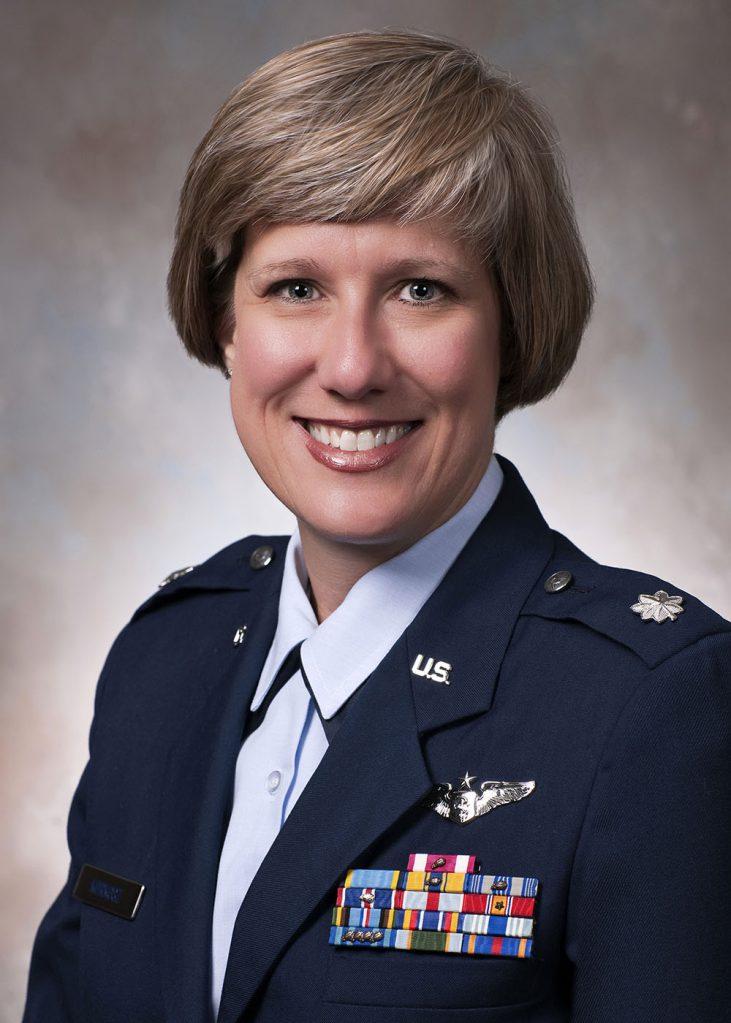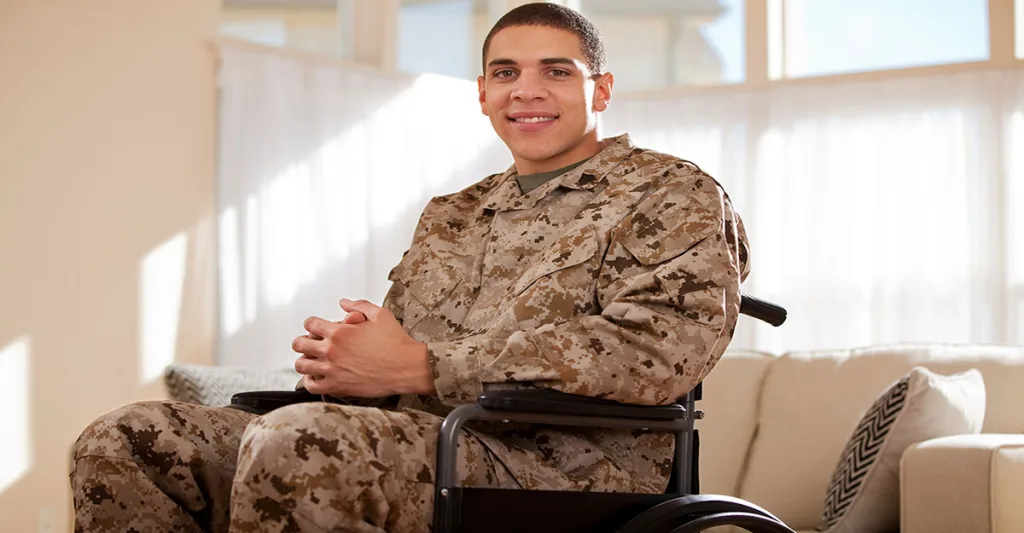Nurses in all practice settings likely will have veteran patients -- many of whom have special healthcare needs.
The U.S. veteran population was about 20.4 million strong in 2016, according to a Fact Tank blog published by Pew Research. Among them are men and women from all walks of life, ranging in age from 18 to 80 and beyond, who served in the military during peacetime or wartime, including World War II, the Korean War, Vietnam or the Gulf War era.
Have you served?
[caption id="attachment_56937" align="alignleft" width="200"] Lt. Col. (Ret.) Jennifer Korkosz, APRN[/caption] Jennifer A. Korkosz, DNP, APRN, WHNP-BC, Lt. Col. (Ret.), U.S. Air Force, said one of the most important questions nurses can ask patients is, "Have you ever served in the military?" The simple question provides important insight for optimally caring for veteran patients, said Korkosz, author of our continuing education course, "Meeting the Healthcare Needs of America's Military Veterans." The question is so important that the American Academy of Nursing built an initiative around it. The Have You Ever Served in the Military? initiative focuses on improving the health of veterans and offers providers, including nurses, important information about what to ask and what to look for when caring for veteran patients. "Healthcare providers can go on the website for information about possible exposures that former military members might have had and things that they might be at higher risk for than the general population," Korkosz said. "Asking the question is the greatest way to open the door and really start that conversation."
Lt. Col. (Ret.) Jennifer Korkosz, APRN[/caption] Jennifer A. Korkosz, DNP, APRN, WHNP-BC, Lt. Col. (Ret.), U.S. Air Force, said one of the most important questions nurses can ask patients is, "Have you ever served in the military?" The simple question provides important insight for optimally caring for veteran patients, said Korkosz, author of our continuing education course, "Meeting the Healthcare Needs of America's Military Veterans." The question is so important that the American Academy of Nursing built an initiative around it. The Have You Ever Served in the Military? initiative focuses on improving the health of veterans and offers providers, including nurses, important information about what to ask and what to look for when caring for veteran patients. "Healthcare providers can go on the website for information about possible exposures that former military members might have had and things that they might be at higher risk for than the general population," Korkosz said. "Asking the question is the greatest way to open the door and really start that conversation." 
Health and well-being concerns
Among the general areas of concern for all veterans, according to HaveYouEverServed.com, are post-traumatic stress disorder, military sexual trauma, blast concussions and traumatic brain injuries. Other concerns are several types of exposures, including radiation, nuclear weapons, Agent Orange and more. The website offers information specific to when veteran patients might have served. For example, veterans and families stationed at North Carolina's Camp Lejeune from Jan. 1, 1957, to Dec. 31, 1987, were exposed to chemical contaminants in the groundwater, putting them at increased risk for certain cancers and other conditions. Veterans of the Vietnam War were exposed to hepatitis C before 1992, and those who served in Iraq and Afghanistan might have been exposed to infectious diseases from bug bites. Korkosz, who recently retired from the U.S. Air Force after 27 years as a nurse and nurse practitioner in active duty and the reserves, said some of the biggest health concerns among military members are musculoskeletal injuries and associated pain, substance abuse problems and PTSD.
Veterans also are at much higher risk than the general population for suicide, she said. The U.S. Department of Veterans Affairs, in its 2019 National Veteran Suicide Prevention Annual Report, said veterans are twice as likely to die by suicide as civilians. And while veterans make up 14% of all suicides, the report said, they make up on 8% of the U.S. population.
Another common health concern, especially among active or recently active military personnel is physical stress. "The military forces are expected to be physically fit," Korkosz said. "That might involve a lot of running or other physical activities that can really put wear and tear on musculoskeletal systems." Sometimes active duty military members will avoid seeking medical care because they don't want to let down their units, which can lead to bigger health problems, according to Korkosz. 
Not all veterans are in VA system
A veteran is defined as a person who served in the active military, naval or air service who was discharged or released under conditions other than dishonorable, according to VA.gov. Nurses might think the VA health system is managing the health of all veteran patients, but that's not the case. Not all veterans qualify for VA healthcare, according to Korkosz. The VA has various service and disability requirements listed on its website.
To help ensure all veterans get the healthcare and mental health services they need, nurses and other providers should ask the questions and look for observable cues listed on HaveYouEverServed.com.
Nurses also can help by knowing which resources in their communities can help veterans. "One of the things that we're seeing with the higher rate of suicide in veterans is that they didn't even know where to turn and weren't sure how to get the help they needed," Korkosz said. "I know I really appreciate it when I have my next appointment in my hand, or I know exactly when I'm expected to follow up and there's a plan in place." It also helps if nurses establish rapport and build trust with veterans in their communities. There are many different types of veteran-oriented groups, including local chapters of the Disabled American Veterans and American Legion. Korkosz, who recently joined the faculty at the University of Delaware as an associate professor of nursing, said nurses are among the key providers who can help veterans heal from often unseen wounds. This can help veteran patients continue to live productive lives and contribute to society. And it always helps to thank them for their service.
"Feeling appreciated and acknowledged is a great way to help build rapport," Korkosz said.
Getting beyond a superficial relationship might help veteran patients open up so healthcare providers are better able to help them. "They could be complaining of physical symptoms or physical concerns, and the cause could be something underlying -- whether it is an exposure or perhaps an emotional concern that is manifesting as a physical complaint," she said. "A gastrointestinal complaint may not really be a stomach problem. It could be something else that could be manifesting as a stomach problem."
Take these courses to learn more about caring for veterans:
Meeting the Healthcare Needs of America's Military Veterans (1 contact hr) Returning veterans may present with war-related illnesses months or even years after their military service. Veterans may be referred to community practices, hospitals, or medical centers for services that are not available at the local Veterans Affairs or military treatment facility. This module describes the unique health conditions of returning veterans. Trauma-Informed Care for Healthcare Professionals (1.5 contact hrs) Many traumatic events involve violations of a person's body integrity; thus, experiencing trauma can also affect a person's general attitudes toward medical care. It is critical that healthcare professionals understand the relationship between trauma, adversity, and health, as well as approaches to create clinical environments that are less traumatic for patients and staff, and that they promote recovery and healing through the services they provide. Beginning research has demonstrated that Trauma-Informed Care has the potential to increase patient engagement in treatment and preventive care, decrease staff turnover, increase staff morale, increase staff's ability to provide patient-centered care, and improve the patient experience of care and health outcomes, as well as promote genuine healing. Post Traumatic Stress Disorder, Part 1: An Overview (1 contact hr) Post-traumatic stress disorder was once associated mainly with the survivors of wars, but today it is used to describe symptoms seen in a wide range of trauma survivors. The U.S. Department of Veterans Affairs National Center for PTSD indicates that at some point in their lives, 7% to 8% of the U.S. population will suffer from post-traumatic stress disorder, although more than half will experience a trauma. This educational activity will address causes, symptoms, and management of this disorder.






